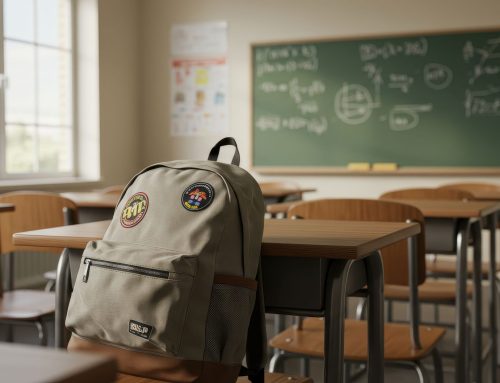The July Equity Exchange newsletter focuses on summer learning and the work that takes place during summer months to prepare for successful “Day One” school openings. This month, we also examine the 2025 Kids Count report and what the newest data tells us about the priorities for the upcoming school year.
Most people think of summer as a time when schools are on vacation. For superintendents, however, summer is a uniquely busy and stressful time. For a school year to be successful, dozens of critical decisions must be agreed upon, and when you have hundreds of schools, thousands of “tasks” must be completed.
Of course, summer is a time for professional development and curriculum writing. It is also the time when large districts buy thousands of computers, books, and materials. However, that is just the tip of the iceberg – at least in the three large urban school districts where I was the superintendent.
It isn’t possible to list the responsibilities in order of importance, priority, or magnitude. While urban districts share many commonalities, each has its unique set of issues. In Austin ISD, for example, language immersion was a major initiative, but in Atlanta, our first priority was restoring trust in the integrity of the assessment and data systems after the largest cheating scandal in the nation’s history. In reality, everything is important. Parents, students, communities, business leaders, politicians, and school board members expect, and deserve, the superintendent to deliver great instruction, great programs, and great school culture.
Summer is a time when the planning of large projects often begins. However, more often, summer is just a time where planning accelerates as teachers and administrators have more time to participate in committees and workgroups. Among the most time-consuming, challenging, and politically sensitive are strategic planning and facilities master planning, where the long-term vision for the school district is shaped for the school community.
Building new schools (and renovating existing facilities) also requires years of planning, with the impacted school communities, architects, city and/or county zoning officials, inspectors, contractors, and lawyers, before the first shovel (or bulldozer) hits the ground. When a new building is finally almost ready to be home to students and staff, depending on the grade levels, there are musical instruments, gymnasiums, parking lots, playgrounds and kindergarten equipment, art room and science lab equipment and materials, libraries, athletics fields and equipment, computers, security cameras, books, food, phones, floor wax, vending machines, and many other details that must be considered. Then, there are contract bids, awards, purchases, and a plethora of administrative details to complete.
The dozens of big and small tasks required when a new school opens also apply to every school in the district. In the districts I led, every school used the same planning tools and followed the same meticulous “Day One” process. There are always a few significant changes. There were periodic upgrades to classroom computers, tablets, and Wi-Fi systems, as well as the introduction of new software systems (e.g., attendance, scheduling, finance, and personnel). Every four or five years, new textbooks and materials are adopted. Not only are these large purchases, in the millions of dollars, but some can be “politically” complicated. Replacing primary literacy and math materials, for example, is expensive, requires a significant investment in training to be successful, and is not always well-received by all teachers (and sometimes parents).
Of course, the most significant decisions that school leaders make are those related to staffing and personnel. During my tenure as superintendent of the Austin Independent School District (AISD), we were the sixth-largest employer in the Texas capital. High-quality curricula are important, as are excellent facilities and a strong academic culture. However, effective teachers who possess in-depth knowledge of their subject are unquestionably the most critical factor in students’ academic success (Wright & Sanders, 2008; Newton et al., 2010; and Gershenson, 2016).
Similarly, the most critical decisions school superintendents make are who they select to lead the schools and the district. While not always the final decision-makers, principals play a significant role in the hiring process. In addition, it is primarily principals who supervise, mentor, and evaluate teachers. In a large urban district, the annual principal turnover rate can be as high as 20% (Lewis & Bradley, 2019; Béteille et al., 2012). As a superintendent, I interviewed every finalist for principalships and senior-officer positions.
In urban public schools, the teacher turnover rate is nearly 10% annually (Diliberti & Schwartz, 2025). In a district the size of Atlanta or Austin, that means hiring about 500 new teachers each year. If you do not plan effectively and begin recruiting early, you will begin the school year with hundreds of vacant positions. There is always a small number of teachers who retire, move, or transfer just days before the start of the school year – i.e., “Day One.” Even then, the superintendent and HR department must have a plan to ensure every child has a permanent, highly qualified teacher in their classroom. Typically, in the districts where I was the superintendent, we opened each year with fewer than 10 teacher vacancies. Part of that success was from creating the kind of culture where teachers from around the state sought out positions in our district.
Percentage of Teachers Who Retired or Resigned by Year and District Type

Many “mundane” details must be managed and monitored to ensure a smooth fall opening. Though they may not be exciting, these yearly decisions, strategies, and procedures are vital for the success of the school year, affecting areas like scheduling and transportation.
High school scheduling can be a challenge, particularly for new principals or when changes are made in policies and philosophies (e.g., 4×4 block, A/B block, and rotating, modified, intensive, and flexible block schedules). The scheduling requirements for students with disabilities can also be a challenge. Students and parents expect to receive their schedules and teacher assignments well in advance of school beginning, and they can be vocal if there are delays.
Today, there are software systems to help monitor many key school processes. In the case of scheduling, in the weeks before “Day One,” I received daily updates on the number of students whose schedules were not complete. To ensure a successful opening, scheduling must be closely monitored, training must be provided, and struggling principals must receive assistance. For high school students, in particular, the process was crucial to ensure that they were not sitting in the auditorium for half the day waiting for the rest of their classes to be scheduled. (My team also developed programs to track every high school student’s progress toward graduation to ensure they had the credits and required courses.)
Transportation is an expensive operation; however, reliability and safety are the most critical concerns. In 2024, Atlanta Public Schools (APS) – one of my former districts – transported more than 20,000 students daily. Over 300 buses travel about 22,000 miles every day to and from school and extracurricular activities (Slocum, 2024). From the superintendent’s viewpoint, there are several vital issues to closely monitor and manage. Background checks and training are important parts of ensuring that buses are operated safely. Absenteeism among drivers can range from 10% to 20%, depending on the district, which means the district must be prepared and organized to ensure all routes are covered twice every day. Low pay, an aging workforce, the physical and mental demands of the job, and the split shift work schedules are contributing factors (Toole, 2024).
Again, today, there are advanced technologies for schools and transportation personnel to utilize. Mobile apps track every bus’s progress, and systems are in place to notify parents and schools if students are not picked up on time. For parents, there are few issues more upsetting than worrying where your child is after school or having your child wait long periods to be picked up in the morning.
Scheduling and transportation are just two of the many routine details that, as a superintendent, I monitored closely and that can cause superintendents many sleepless nights. There are many more – clean buildings and cut grass, first-class band uniforms for all schools (not just the communities that can raise the most money), security for Friday night football games, nutritious meals, state-of-the-art computers and interactive classroom whiteboards, 100% reliable Wi-Fi, and effective, on-site technology support for classroom teachers, and dozens more. The list can seem daunting!
For me, it was important to personally manage the overall process. Naturally, my senior officers handled many of the details, but ultimately, a safe, smooth school opening is the responsibility of the superintendent. To ensure that everything was ready on “Day One,” I required a detailed management process and regular meetings with principals and department heads. There were always a few last-minute challenges, particularly with new principals who occasionally had to be “reminded” by the superintendent of the consequences of having a subpar opening.
“Day One” is a new beginning. Students have new teachers and new subjects. Many are transitioning to a new school, including from elementary to middle school or from middle school to high school. Teachers have new students, new courses, and perhaps even move to a new school or district. For principals, there are new students, new teachers, new assistant principals, and new custodians, bus drivers, and cafeteria workers. School boards and superintendents introduce new goals and programs. Getting ready takes months. In part, that is what happens while schools are “on vacation.”
Béteille, T., Kalogrides, D., & Loeb, S. (2012). Stepping stones: Principal Career Paths and School Outcomes. Social Science Research, 41(4), 904-919.
Diliberti, M. K., & Schwartz, H. L. (2025). Educator Turnover Continues Decline Toward Pre-Pandemic Levels: Findings from the American School District Panel.
Gershenson, S. (2016). Linking teacher quality, student attendance, and student achievement. Education Finance and Policy, 11(2), 125–149.
Guley, G., & Reznik, T. (2019). Culture eats strategy for breakfast and transformation for lunch. The Jabian Journal, 62-65.
Koedel, C., & Rockoff, J. E. (2015). Value-added modeling: A review. Economics of Education Review, 47, 180–195.
Levin, S., & Bradley, K. (2019). Understanding and addressing principal turnover: A review of the research. Reston, VA: National Association of Secondary School Principals.
Newton, X. A., Darling-Hammond, L., Haertel, E., & Thomas, E. (2010). Value-added modeling of teacher effectiveness: An exploration of stability across models and contexts. Education Policy Analysis Archives, 18, 23–23.
Slocum, A. (2024). Atlanta Public Schools Has a Promising Start to the School Year. https://apstoday.us/tag/school-bus/
Toole, M. M. (2024). The Wheels on the Bus: A Qualitative Explorative Approach to Reducing the Effects of the School Bus Driver Shortage (Doctoral dissertation, Trident University International).
Wright, S. P., & Sanders, W. L. (2008). Decomposition of estimates in a layered value-added assessment model. National Conference on Value-Added Modeling, Madison, WI. Retrieved August (Vol. 22, p. 2008).







